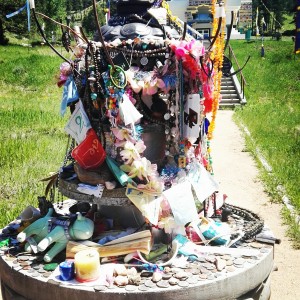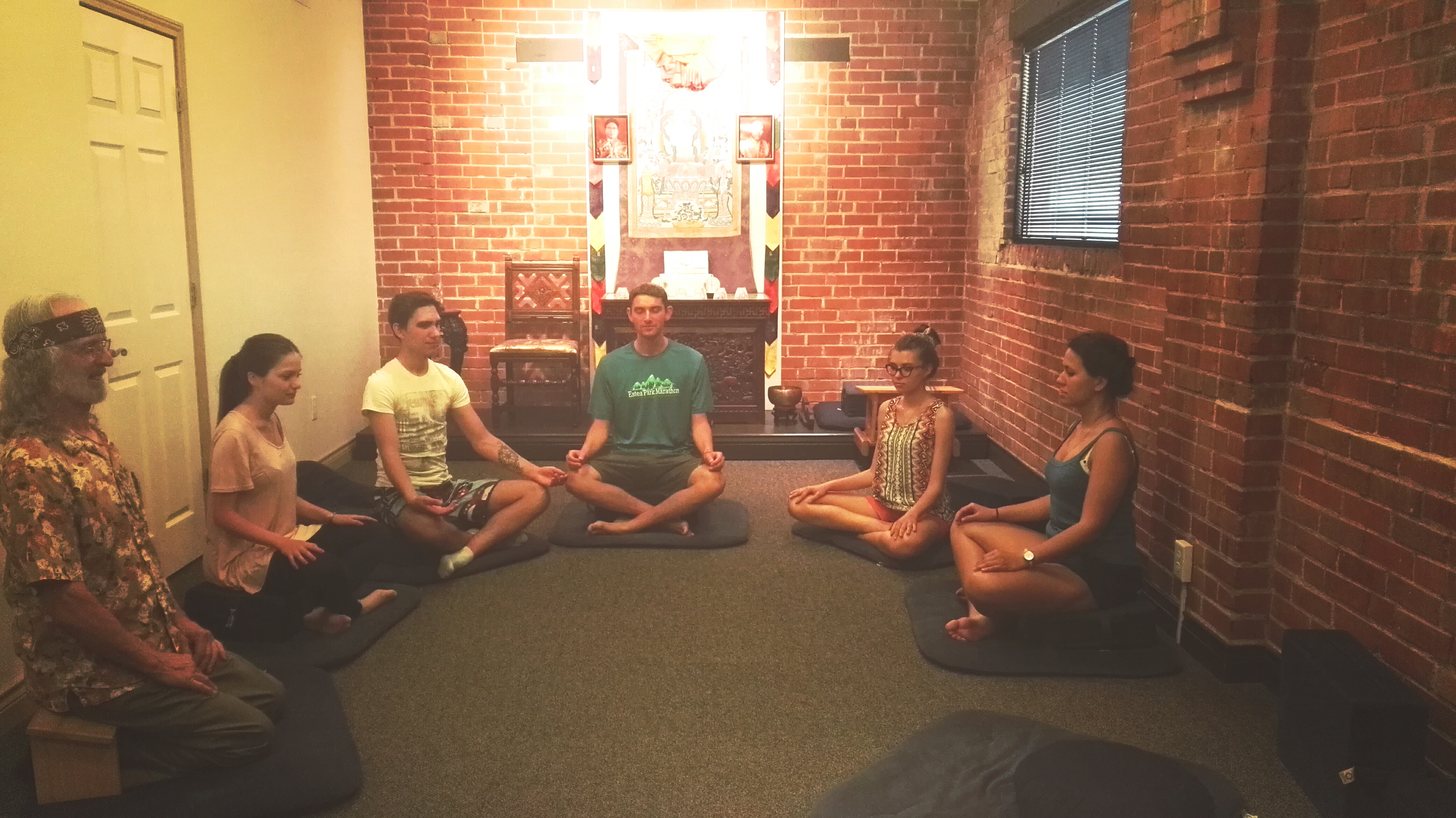OUT OF STUPOR AT THE STUPA: THE GREAT STUPA OF DHARMAKAYA
The Great Stupa of Dharmakaya is located on the grounds of the Shambhala Mountain Center, a six-acre Buddhist retreat in the Colorado Rockies that welcomes visitors from around the world interested in gaining a deeper connection to their own spiritually and self-awareness. Surrounded by the towering peaks of the Rockies, the center is home to sprawling meadows, deep forests and lively creeks. But the most striking feature of the Shambhala Mountain Center is the Great Stupa of Dharmakaya, one of the most important examples of sacred Buddhist architecture in the United States.
In ancient times, Stupas were mounds of earth and stone used to bury kings. At the time of the Buddha’s death, the stupa changed from a burial site into a religious monument intended to commemorate the life of a great Buddhist leader and honor the Buddhist path.
The Great Stupa of Dharmakaya was built as a memorial to Chögyam Trungpa Rinpoche, the creator of Shambhala Buddhist teachings and the founder of the Shambhala Mountain Center. Originally born in Tibet, Trungpa is credited with making Tibetan Buddhism more accessible to Westerners.
Walking up to the stupa is a humbling experience. It appears atop the hillside, the golden spire peaking out of the trees. In front of the stupa is a place to leave an offering from the Buddha. It is customary in Buddhist tradition to walk clockwise around the stupa, which gives you a chance to look at the artwork decorating the blue, yellow, red, and green columns buttressing the northern, southern, eastern, and western sides.
Source: https://www.youtube.com/embed/sSjZzNvZDoM
DIRECTIONS
The Shambhala Mountain Center is about an hour northwest of Fort Collins by car. There is also a shuttle service for those participating in Shambhala Center programs.

"This was the first time I visited this kind of Buddhist holy place, and it was always my dream. First, I was impressed by the design and the colors of the Stupa as it seemed for me not so common among the Buddhist temples. The excursion itself ran through the main steps of the Buddha's life journey and I discovered for myself the idea of close connection between his teachings, thoughts and the Stupa's design. It is simple enough to perceive and rather complicated to understand. Each little thing has its own sacred meaning and it's easy to feel like you already are familiar with the concepts. But here, in the Stupa, you can deeply get inside your mind to see and realize how you can control yourself through the relaxation of body and consciousness. It was a place where I felt completely calm and balanced with myself. For me it was an experience of unbiased looking at myself and if I ever had an opportunity to visit this place again it would be with a deep intention. It's not about visiting an ordinary sights - it's something bigger that you can try to experience yourself."
Anna Kradetckaia, Tomsk, Russia
INTERESTING FACTS
Why does the statue of the Buddha have long earlobes?
The earlobes are elongated, partly to indicate the Buddha is all-hearing, and partly as a reminder of the heavy earrings that weighed Siddhartha down before he renounced material things to seek enlightenment.
What do the different colored gates mean?
The white color of the Stupa itself stands for the space element, meaning ignorance. Yellow embodies the earth element and the sin of pride. Then the Blue gates symbolize the water element and ones anger. The Red is the fire element and is supposed to symbolize attachment. And last, the Green gates symbolize air element and jealousy.
Why is there a statue of a standing Buddha?
Near the top of the stupa is a statue of a standing Buddha. This is a unique feature of the Great Stupa of Dharmakaya. Most stupas only have statues of a seated Buddha. The standing Buddha represents the ambulatory teachings of Chögyam Trungpa Rinpoche, who helped bring Buddhism to the West.
Get savvy with some helpful tips
WHY MAKE AN OFFERING?
Like the dream catchers save your vivid dreams, offerings at Stupas have the power to make your wishes come true. Is it so? It is your mind that decides whether or not this is true.


